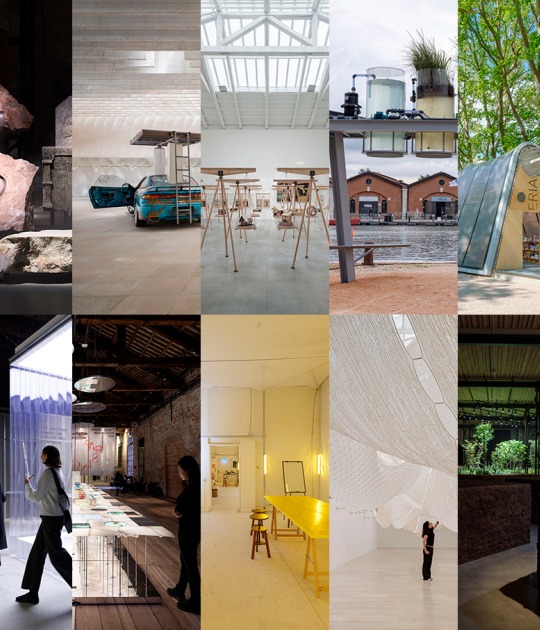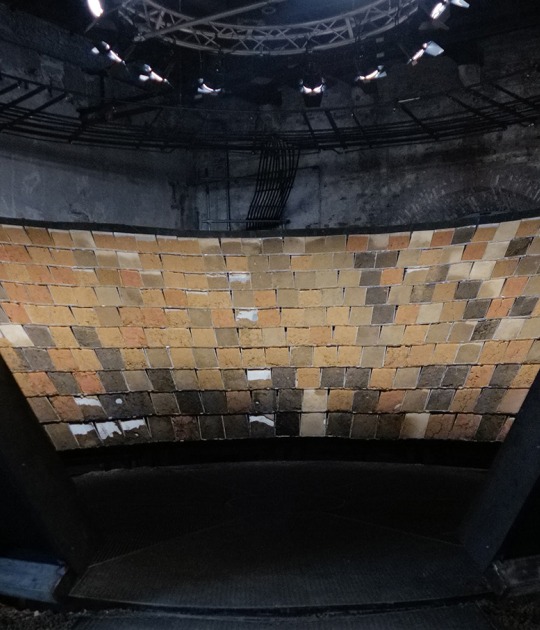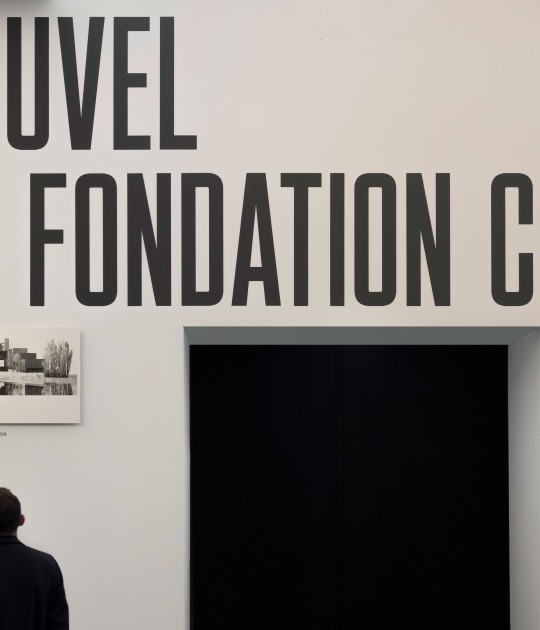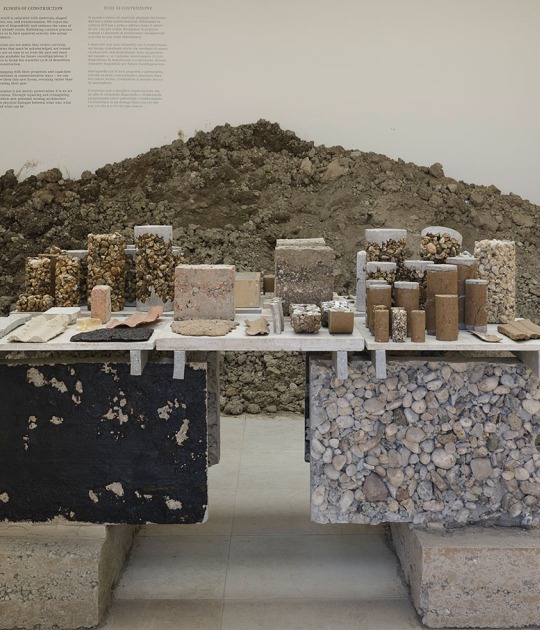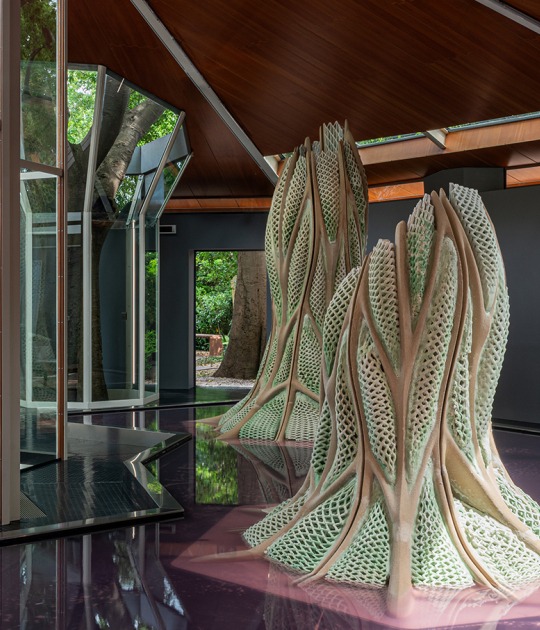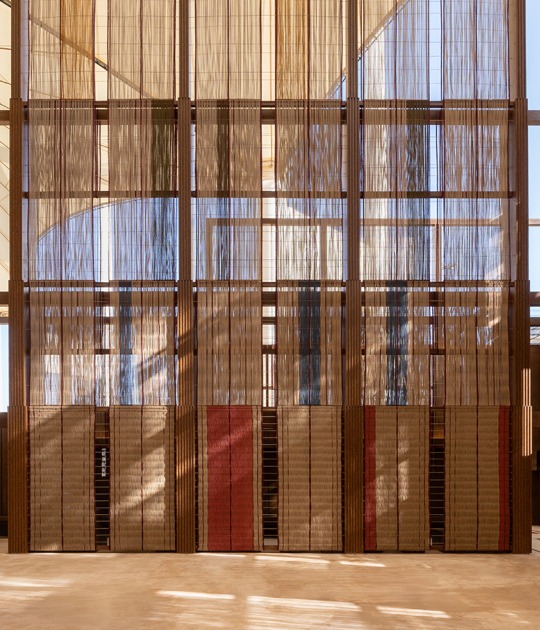The pavilion is coordinated by Cardinal José Tolentino de Mendonça, poet and prefect of the Dicastery for Culture, with the collaboration of curators Giovanna Zabotti and Marina Otero, along with architects Tatiana Bilbao and Anna Puigjaner, a team of female curators and architects who bring complementary perspectives and enrich the intervention. Opera aperta does not seek a closed message, but rather presents itself as an open process that invites collaboration and dialogue, blurring the lines between creator and audience.
Opera aperta is an initiative that offers a renewed perspective on how architecture and the Church can connect with current challenges. Rather than relying on traditional grandiloquence, this proposal highlights the importance of restoration and collective care, inspired by Pope Francis' call to protect our common environment a decade ago.

Holy See Pavilion. Venice Biennale. Photograph by Jose Hevia.
The project takes place in the House of Saint Mary Help of Christians, a historic Venetian building with roots dating back to the Middle Ages, originally intended to assist pilgrims. Unlike a static "exhibition," this space remains in constant evolution for six months, a true "exhibition" in its movement, focusing on conserving and reusing existing structures rather than replacing them. Thus, architecture is understood as an act of responsibility that goes beyond the buildings, also involving the people and the surrounding ecosystem.
Upon entering, visitors are greeted by no typical explanations or display cases; instead, they encounter an environment where restoration is underway, with tools, scaffolding, and artisans at work. This approach encourages active community participation, which can join open workshops on conservation techniques or enjoy musical performances facilitated by local organizations. Furthermore, a communal table managed by a cooperative group provides a meeting point to strengthen social ties and create a sense of belonging.
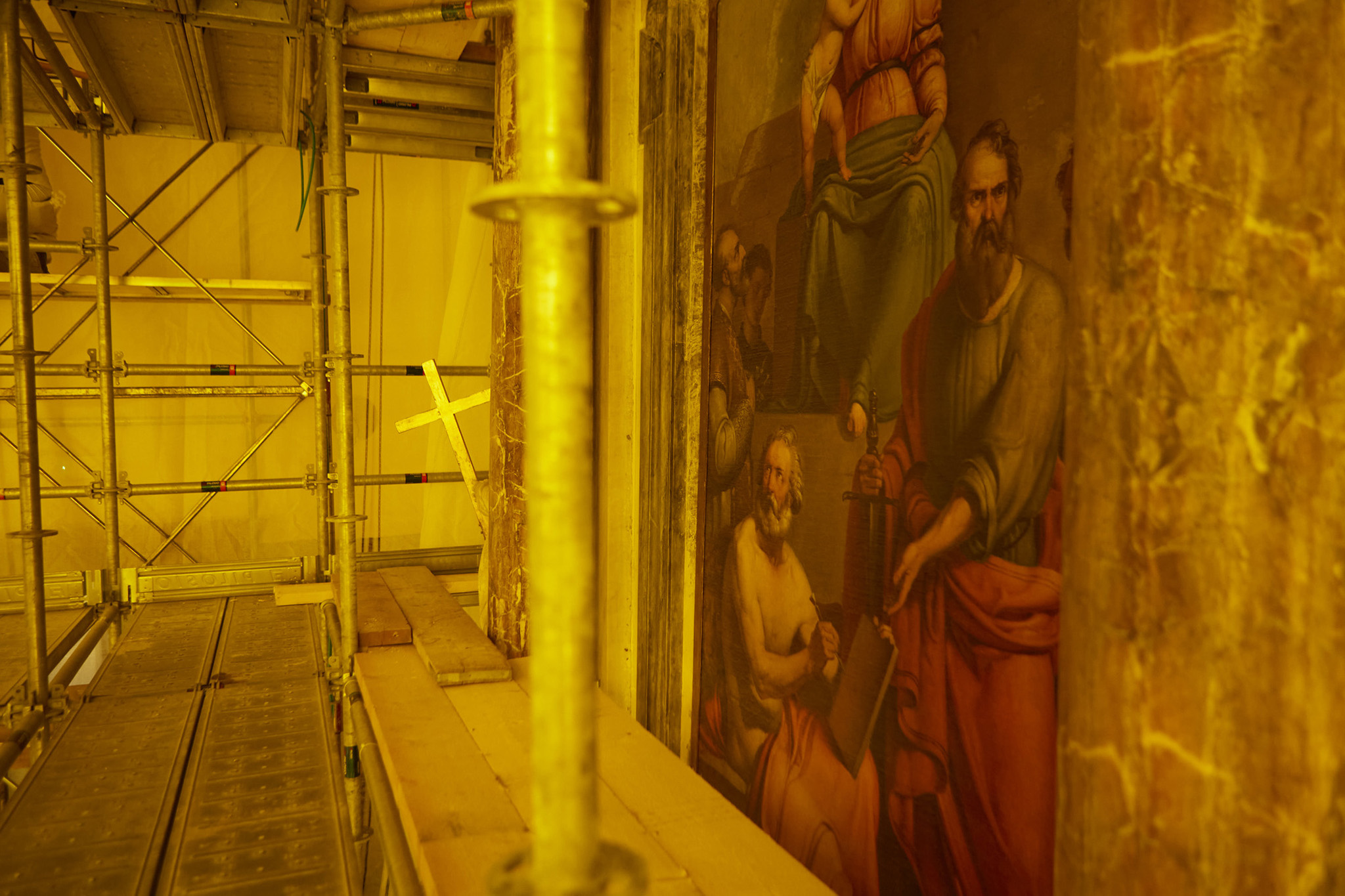
Holy See Pavilion. Venice Biennale. Photograph by Marco Cremascoli.
Recognized at the 2025 Venice Biennale with a special mention, this proposal symbolizes a hopeful vision for contemporary architecture: innovation doesn't always mean creating something new from scratch, but rather caring for, repairing, and revitalizing what is already part of our reality, giving value to those who inhabit the planet. In this way, both the Church and architecture position themselves as agents of social and environmental change, committed to building lasting bonds with the communities and environment we share.























